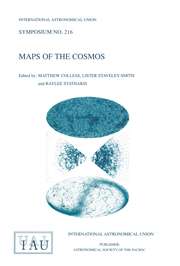Article contents
Magnetohydrodynamics of an active region
Published online by Cambridge University Press: 14 August 2015
Extract
The dynamics of the magnetic fields which are imbedded into the non-stationary outer layers of the Sun show many facets of interest to observers and theoreticians alike. In a short review I can only deal with a small number of them and occasionally glance at some others. I hate to call these magnetic fields frozen into a matter which is rather in a boiling state, but the electrical conductivity in these layers is high enough to keep matter and magnetic flux together for rather long times, so that we can discuss the most important questions within the framework of magnetohydrodynamics with infinite conductivity. I will first talk mainly about the layers below the photosphere, where the matter controls the motion of the field, secondly about the intermediate state near the photosphere, where matter and field have comparable energy, and finally about the upper layers where the field controls the material motion.
Information
- Type
- Part II: Theoretical Aspects
- Information
- Copyright
- Copyright © Reidel 1968
References
- 2
- Cited by

